Mystery Bullpups & the M14
January 7th, 2020
6 minute read
The path to reach the classic M14 rifle design is filled with technological twists and turns. Along the way, a number of advanced firearms concepts would influence U.S. Ordnance in their decision. Some of these arms are well known. Others, like the unique “Model 45A”, are less so.
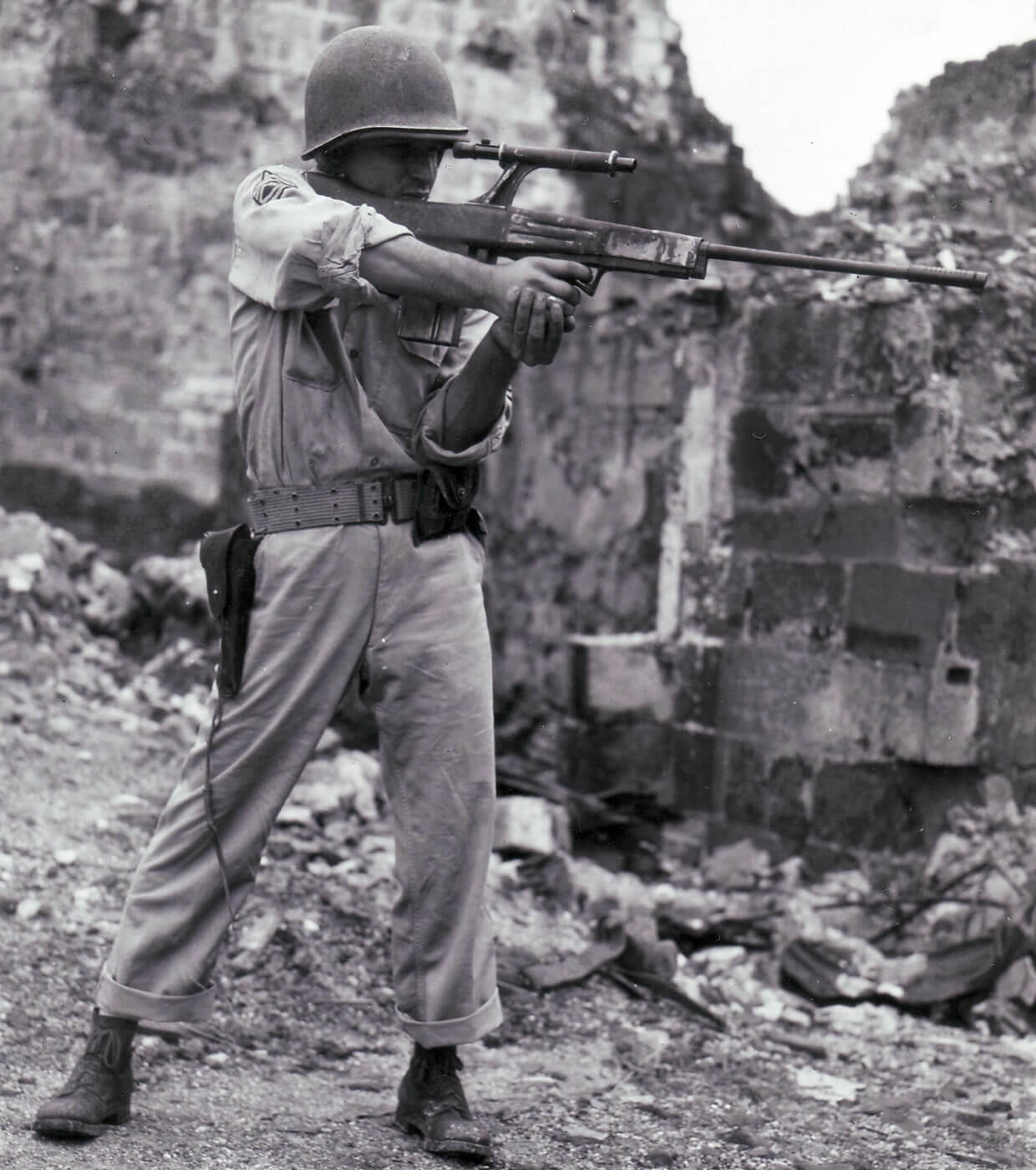
Of all the thousands of images I have found over years of research into U.S. small arms, I’ve never seen a firearm the likes of the “Model 45A.” Conceived and assembled by an unknown American design team in Manila in the Philippines during the last days of World War II, the Model 45A was not an officially sanctioned design. Its name is official sounding, but yet it is nothing more than a nickname applied in the field. Despite all of this, there are several photos of the rifle, taken by official photographers, and they provide us with a fascinating look into a highly advanced rifle concept circa 1945.
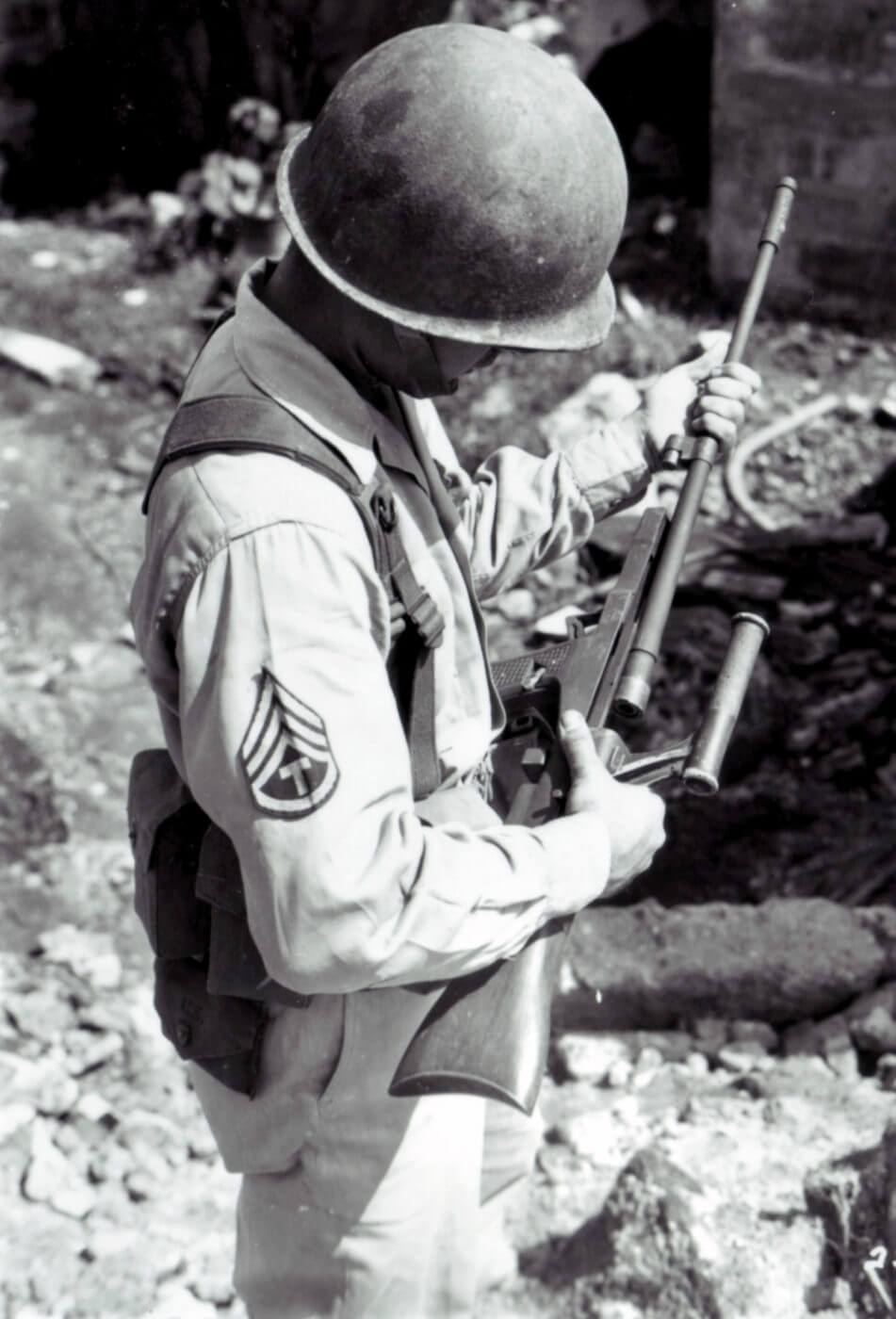
First Sighting
The photos of the Model 45A were taken by U.S. Army Signal Corps photographers, in and around shattered Manila during September 1945. The official captions on the photos were cryptic and described the firearm as a “field expedient” or “experimental” .30 caliber light machine gun. No names were provided for the sergeants used as models or any of the officers or men shown in the Ordnance Technical Office in Manila.
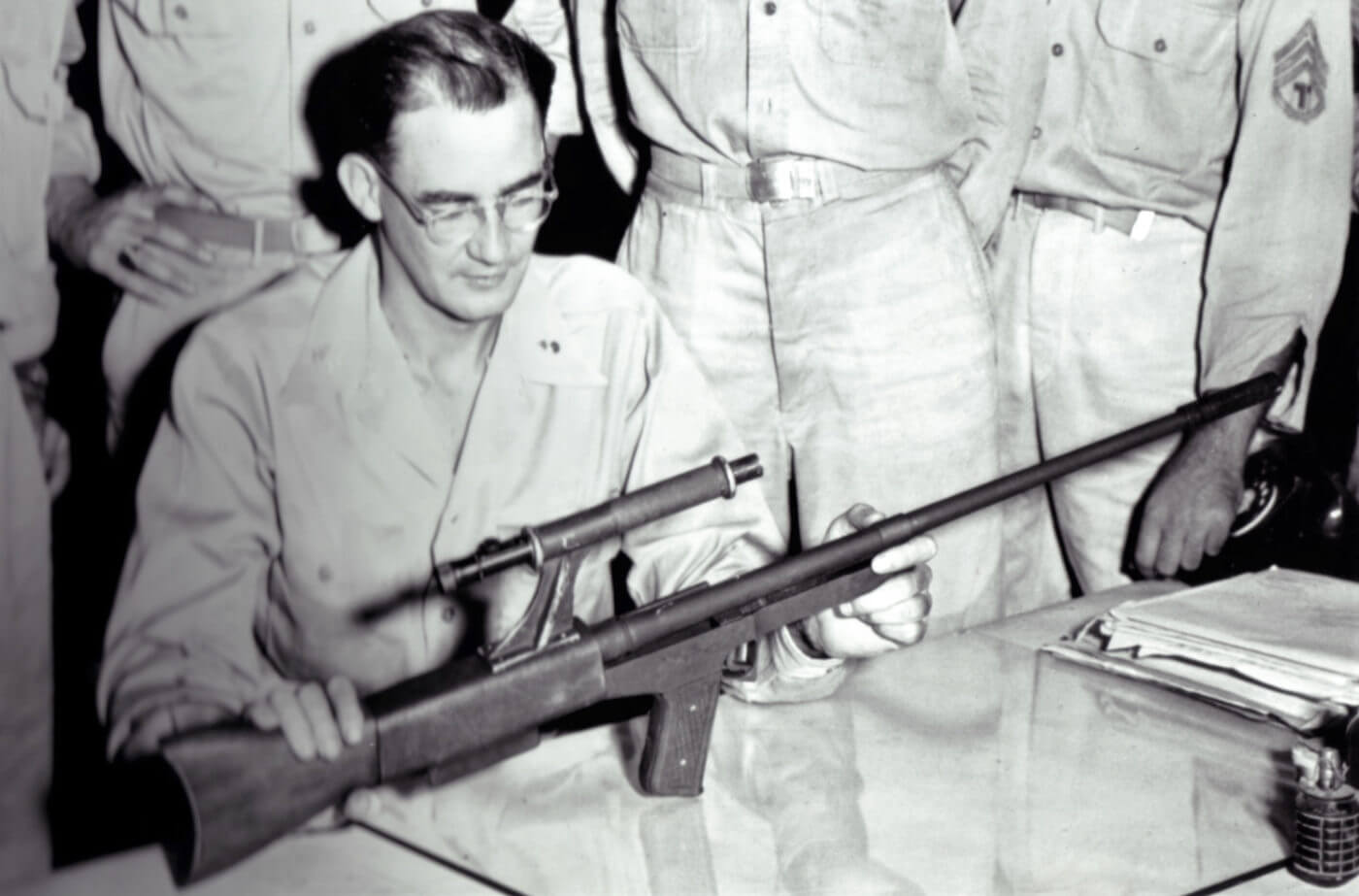
I checked with the former director of the U.S. Army Ordnance Museum along with several other American military museum directors, and none had ever seen the Model 45A, nor had they heard of it, or even seen the photos of it. As far as is known, the Model 45A was a design conceived in the field that never made it back to the United States.
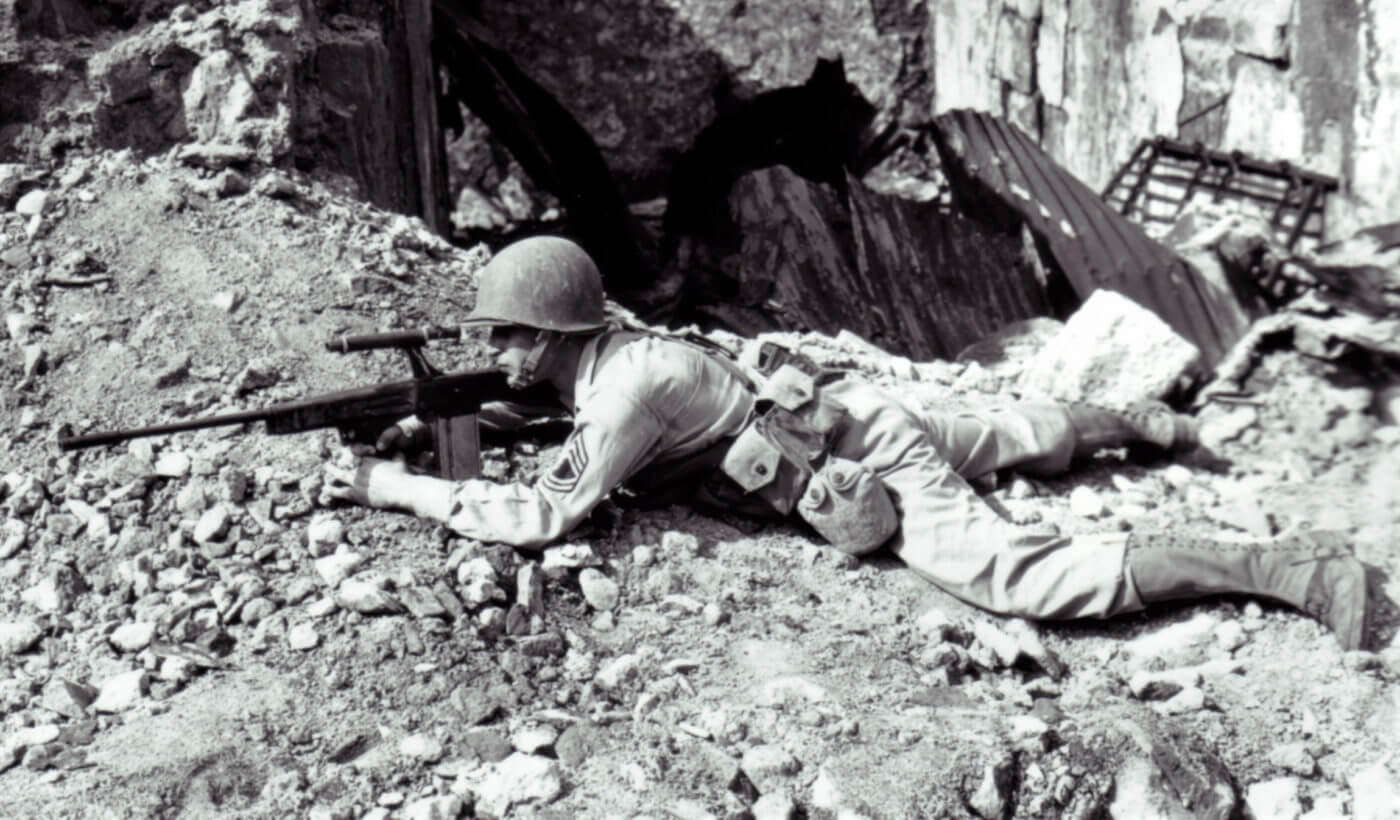
How did the official Signal Corps photographers get involved? Since the war was recently over, the photographers were probably looking for something interesting to cover. Clearly, the ruins of Manila made a perfect backdrop. Ultimately though, the Model 45A was not an officially sanctioned design, and the U.S. Military takes a dim view of its troops developing their own weapons (whose designs could then be commercially viable) on “company time.”
Was It Real?
The Model 45A is a very modern-looking “bullpup” design, featuring a particularly long barrel. A Browning Automatic Rifle (BAR) magazine extends from the base of the receiver. Ostensibly, it was chambered for .30-06 ammunition. There is a modern-looking pistol grip and the overall appearance is particularly futuristic. Most comments from firearms experts suggest that the Model 45A is simply a mock-up, and not a live gun. The receiver cover appears rather crude, and there doesn’t appear to be any bolt or bolt carrier.
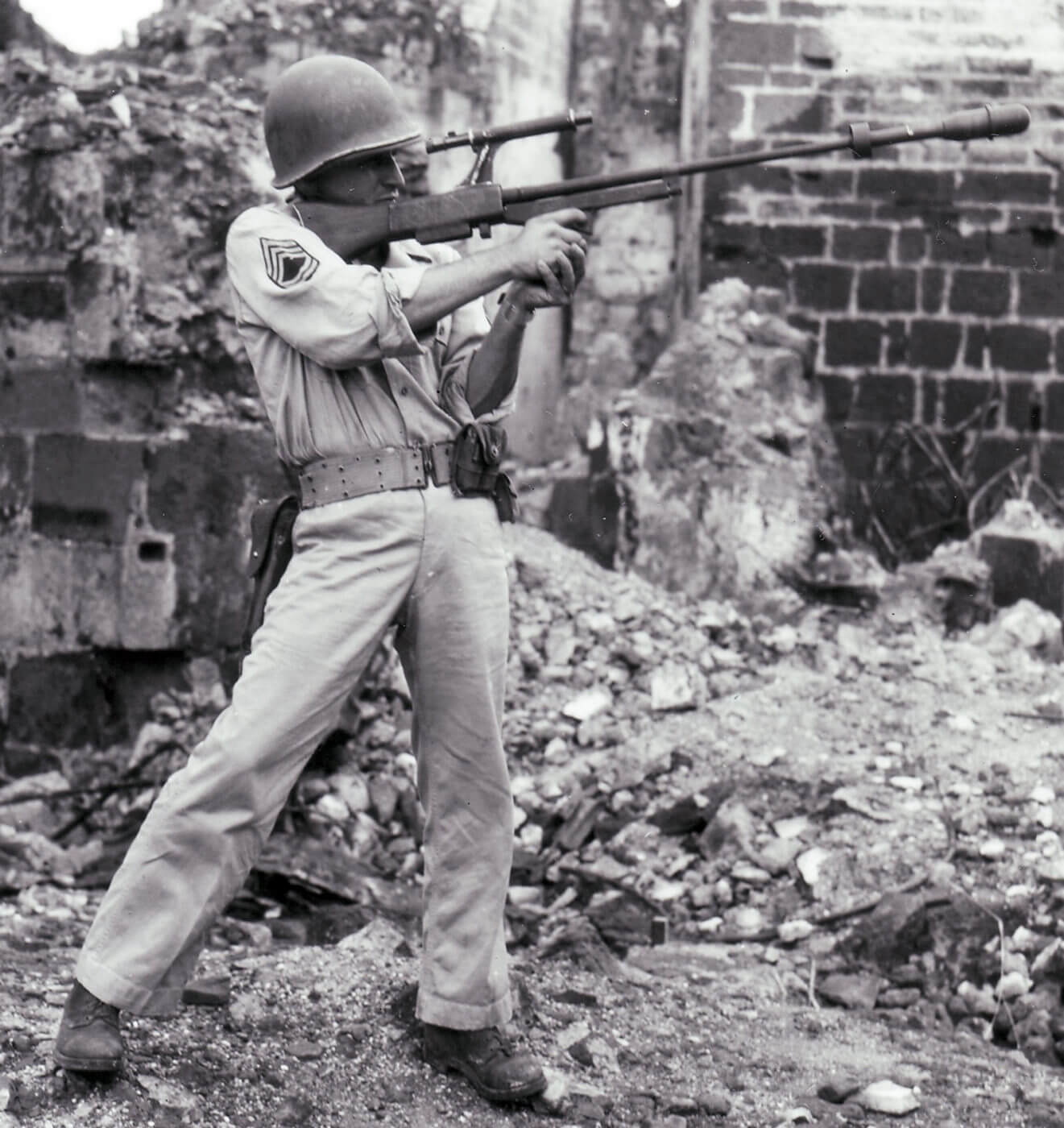
Even if the Model 45A couldn’t fire, it shows many forward-thinking features: the integral carry handle (comparable to a contemporary Steyr-AUG design) indicates a built-in telescopic sight. There is a small flash hider. Consideration was also given to launch grenades (with it showing an M9A1 anti-tank rifle grenade affixed to the end of the barrel). There is no bipod or front grip shown, and this would lead one to believe that the Model 45A was intended to be an automatic rifle as opposed to a light machine gun.
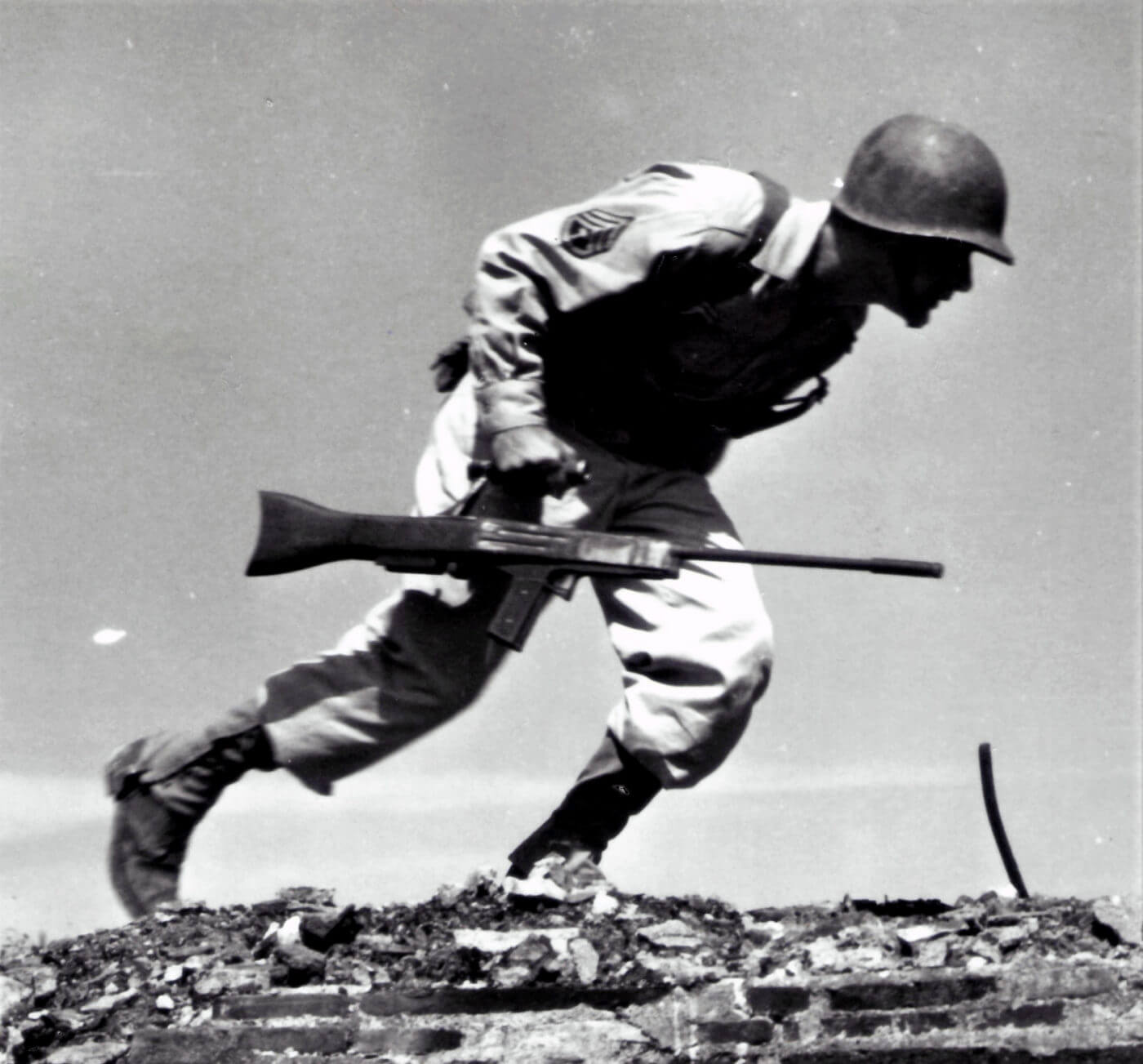
As is the case with many historical photos of rare firearms, these images raise more questions than they answer. It would be interesting to know who designed the Model 45A, why did they do it, and what other small arms designs influenced the concept. This one-off was not part of any Ordnance Department design competition, but it heralds several ideas that would compete very soon.
The T31 Light Rifle
Interestingly, another design (at least superficially similar to the obscure Model 45A), is John Garand’s contribution to the post-World War II “light rifle program,” the T31.

The light rifle program began during late 1945 with the goal to develop a new rifle that used the T65 cartridge — the early basis for the 7.62x51mm “NATO” cartridge. Garand’s T31 used a bullpup configuration, with a 20-round magazine and selective-fire capability (with a projected 600 rpm cyclic rate). The magazine would be the only part of the T31 to move forward as it became the magazine used in the T44 rifle, and ultimately the M14.
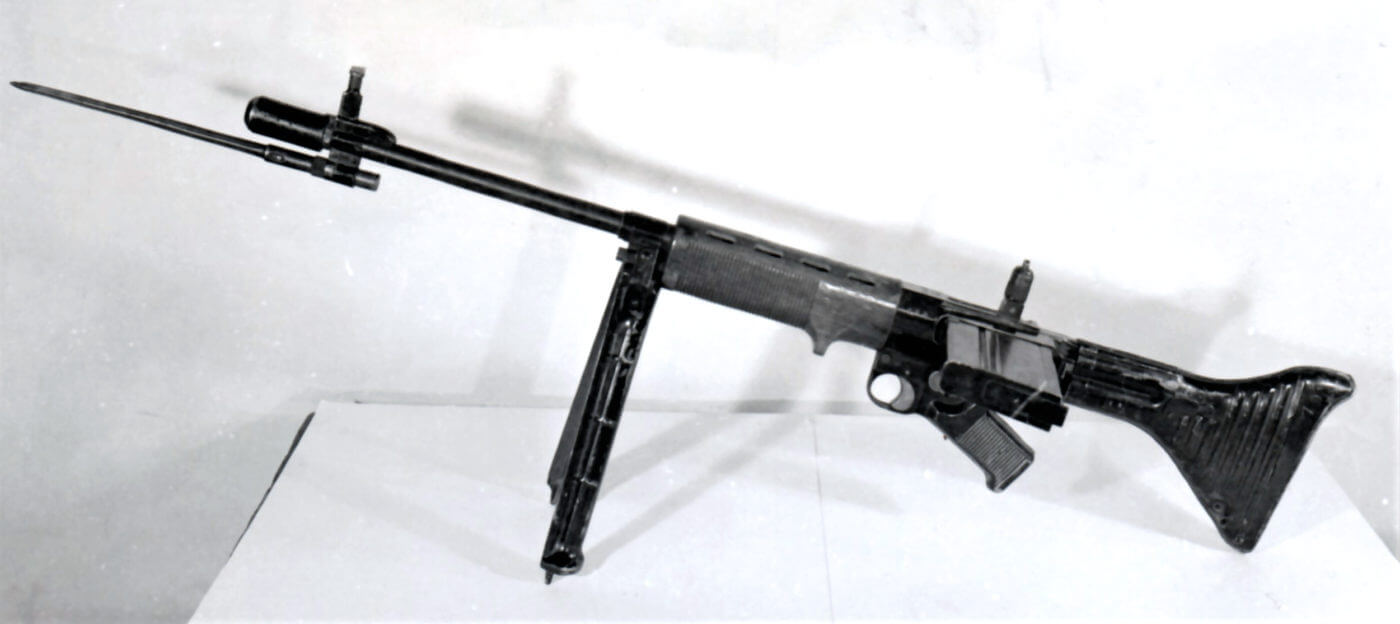
The T31 harkened back to John Garand’s initial M1 rifle design as it used a complex gas trap system — as the barrel was fully surrounded by a sealed cylinder (that also served as a handguard). It was hoped that with the redirection of the T31’s muzzle blast, it would dampen the firing report and reduce recoil.
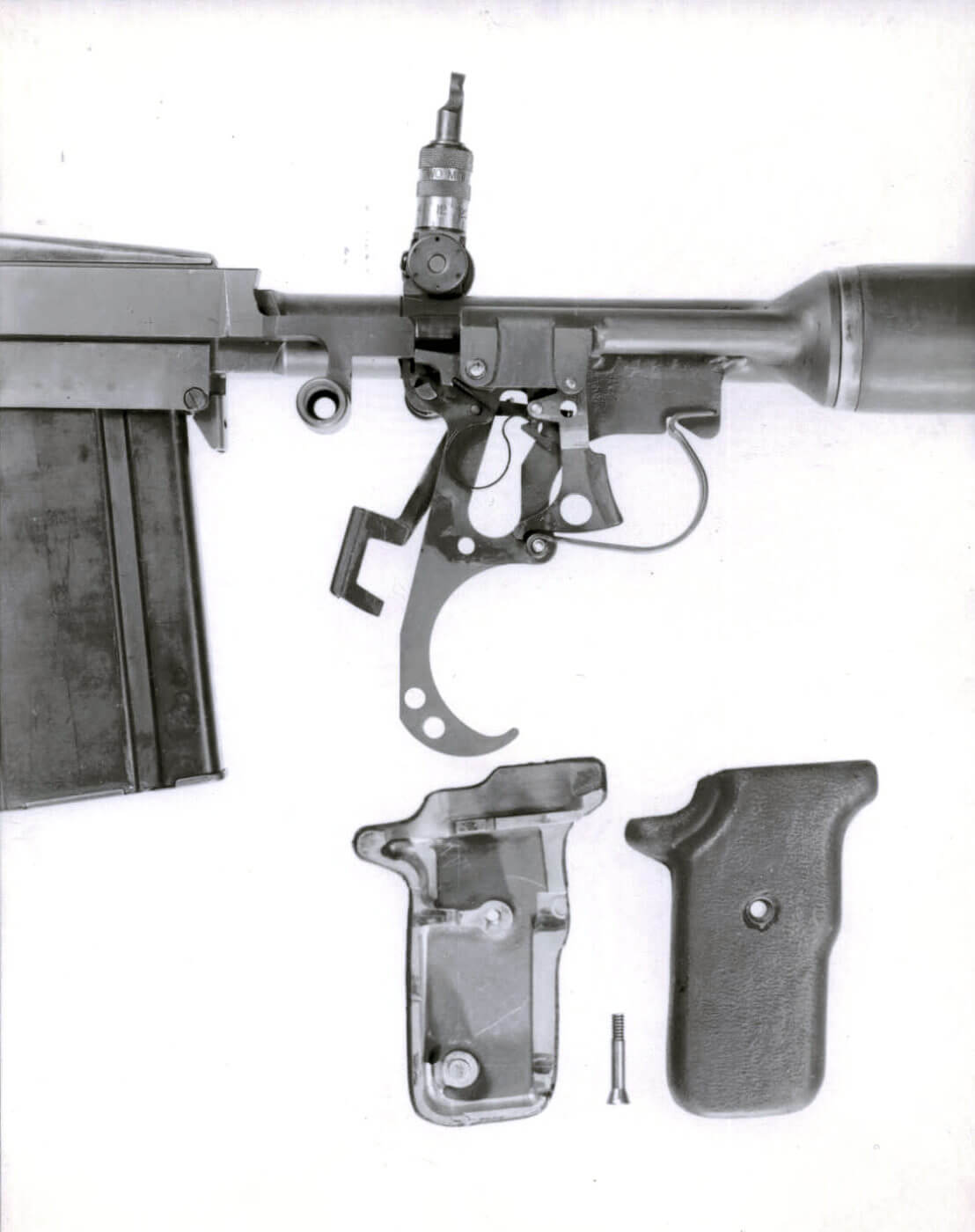
Cooling the handguard and dealing with significant carbon build-up were two of the significant problems experienced with the T31 prototypes. Garand was rumored to have been working on a second generation T31 design (with a more conventional gas system) at the time he retired in 1953. Like the Model 45A, the T31 disappeared into the obscurity of the forgotten firearms designs, but set the stage for the development of the far more successful M14.
The Result
The M14 would go on to become the U.S. Military rifle to replace the revered M1 Garand rifle, combining the general design of that rifle with the new 7.62x51mm round and a detachable magazine. To give American firearms enthusiasts the chance to acquire their own piece of American firearms history, Springfield Armory in Geneseo, Illinois manufactures a civilian-legal, semi-automatic version of that rifle in its M1A.
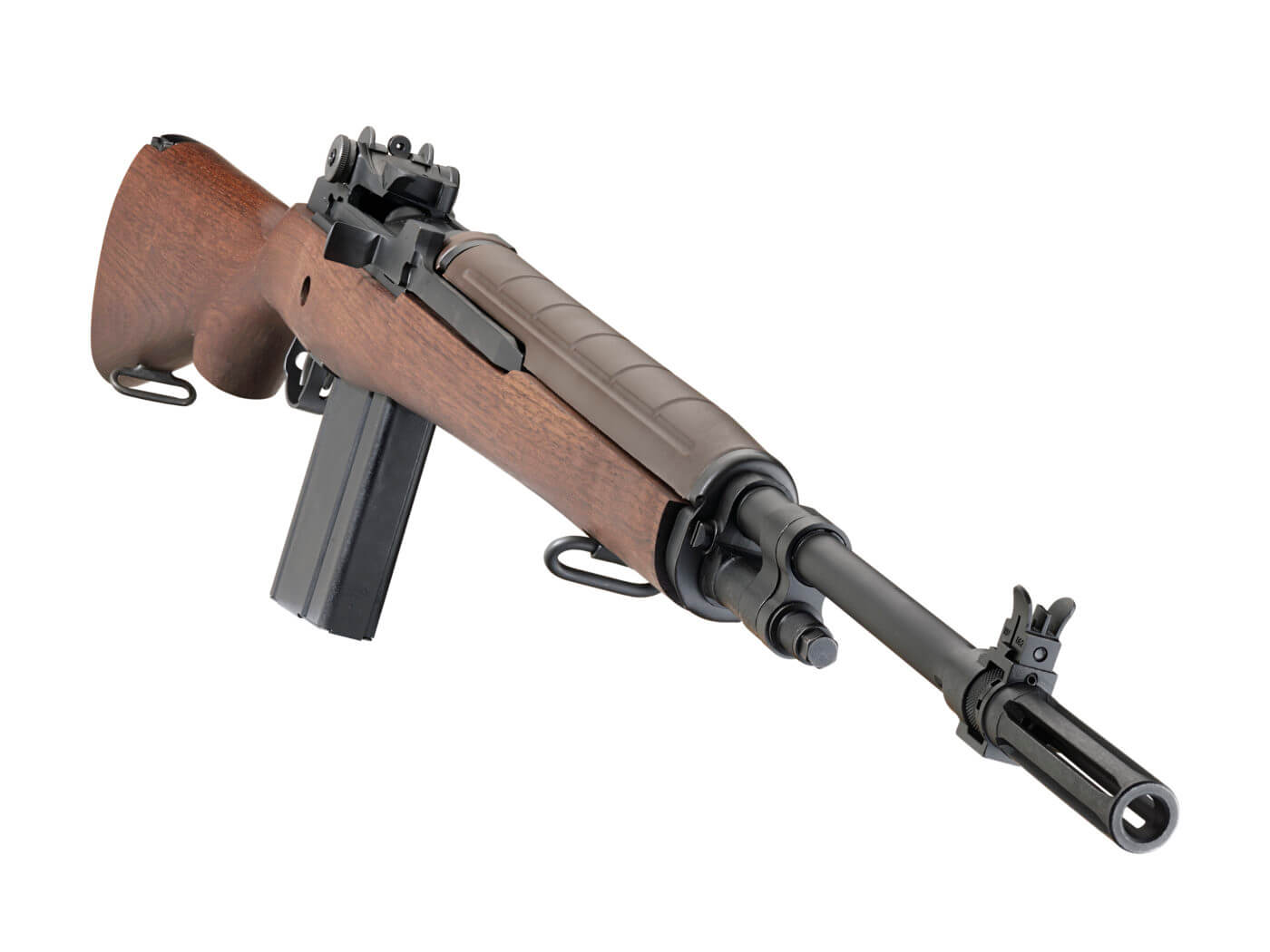
The rifle is offered in numerous variants ranging from precision versions to CQB-style short variants. However, the “standard issue” model with a walnut stock truly captures the essence of the original M14 rifle. It’s a great rifle for competitive shooting or simply admiring, if you’re a “walnut and steel” kind of shooter. And it represents the culmination of decades of firearms design and refinement.
Join the Discussion
Featured in this article
Continue Reading
Did you enjoy this article?

 54
54









